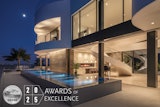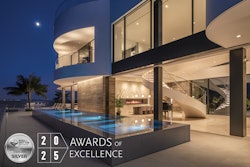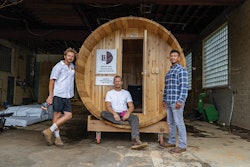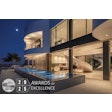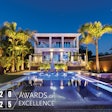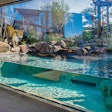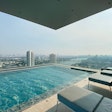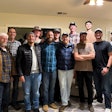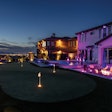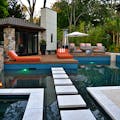
A renowned master of custom residential swimming pool design and construction, David Tisherman is also famous for his unabridged commentary about the shortcomings inherent in the industry's design-education offerings. In this, the first of a series of pieces discussing ways to elevate and advance the cause of aquatic professionalism, Tisherman looks toward the future with an eye on the business side of turning water into art.
It was back in 1998 when Skip Phillips, Brian Van Bower and I started working together on the Genesis 3 Design Group (G3) educational program – something we believed no one in the pool and spa industry had never seen before.
The underlying structure was fairly simple, based on what I called the ABCs. More of a conceptual underpinning rather than an overt curricular outline, the idea was that three pillars – Artistry, Business and Construction – would serve as the foundations for our programs. From the start, we believed that by supporting these three areas with university-level training, we could help create an industry that was far more credible, dynamic, creative and ultimately more successful.
In coming issues of AQUA, we're going to explore these ABCs from a variety of viewpoints and in meaningful detail. For reasons I'll explain below, for now let's open the discussion with the B – Business.
Begin The Beginning
"B" takes precedence because the way you present yourself in terms of business practice is based entirely upon what you can do on the Artistry and Construction sides of the formula. Before you do anything else, you must have a clear picture in your own mind of what you want to be as a businessperson working in this field. Are you going to base your approach on training, artistry, craftsmanship and creativity? Or are you going to follow the crowd and be satisfied with mediocrity?
From a strictly business standpoint, this all means to become truly successful, to be professional, in this industry you must strive to become something very different from the majority of your peers.
Design Lines
Here's where things get tricky, however. Simply declaring yourself a professional and promoting your business as a cut above does not make it so.
Consider design: The traditional pool industry has always treated design as a sales tool, rather than an art form. The stereotypical scenario of the soft-shoed sales guy closing a deal in one meeting using design simplistic templates remains a reality to this day. Of course, now it's done with a laptop computer in some sort of sketch-up "design program," but it's the same process. Design is product and sales driven, rather than based on artisan training.
When you look at other professions such as interior design, architecture, landscape architecture, etc., designers are always paid for their work, whether the design is ever executed or not. Ultimately, people in our industry should also be paid for their creative output just as are their counterparts in other industries.
The problem is, however, to be worthy of payment for creative output, you need to be trained and possess skills other people don't have. The path to that level of expertise is education.

Contrast that with an approach that starts with the customer's personal tastes and desires, and then moves toward design. For instance, when I meet with clients, we spend two hours or more talking about a limitless range of issues and possibilities. We talk about the architecture of their home, their tastes in the arts, travel experiences, the way they want to interact with their outdoor environment, the surrounding environment, color, planting choices, texture and a host of other subjects.
After our initial discussion, I return to my studio where I generate a proposal based on the amount of time it will take to do the design work. Once the clients agree, I go to work bringing together the color palette, materials selections, focal points, textures, interior features, and all the associated elements in the landscape such as dining areas, pathways and softscapes.
We'll get more into the artistic side of design in the future, but for now in terms of the business model, you have to ask yourself, are you selling a pool, or are you selling an overall environment, a place where human experience unfolds?
How you answer marks the difference between selling inexpensive pools where you're locked down with incredibly narrow margins and fighting price wars with your local competitors, or projects with higher margins where you're providing something for the client no one else has.
The argument for the production-based business model is always the same: it's a competitive market and clients buy based on price. And now, add to that the recession, which has severely limited buying power, and you have an even stronger case for price-based marketing. The way to break out of that league of price-cutters is by providing something more beautiful, valuable and personal to the client.
Visualizations

In the simplest of practical terms that we all face, consider your company name. Does it harmonize with the image you want to present? I named my company David Tisherman Visuals because I like the straightforward dignity of using my name and the world "visuals" represents the most important aspect of the work – aquatic design is primarily a visual medium. (Sound, feel and smell are crucial too, but that's another entire discussion.) To my ears, far too many pool company names sound hokey. If you want to reach for excellence, calling yourself "Joe the Pool Guy" might not be the best choice.
In addition to my company name reflecting the impressions I want to make, my business card is a work of graphic art that was rendered with the same level of care that I use in actual design work. I deliberately made it so that it stands out from others and leaves a visual impression with its font, logo and color scheme.
I realize that compared to the overall picture of talent, education, ability, success, reputation and legacy, your company name and business card are seemingly insignificant. My point is that if you want great success, you've got to think about the details and how even the smallest things contribute to who you are professionally.
Accurate Representations
As I mentioned above, I spend a great deal of time with clients prior to doing any type of design work. Even before I meet with them, I spend on average an hour on the phone qualifying them, determining whether or not we'd be a good fit. I do this because if someone is looking for a $30,000 pool, there's no point in me showing up with a portfolio filled with expensive glass tile finishes that would cost more than their entire budget.
I need to know that the clients are serious, are able to work within a budget that enables me to do quality work and that they are looking for something creative. I know from talking to clients who have tried working with builders that aren't a good fit, some sort of big trouble is almost inevitable. Some in our industry get in way over their heads because they're not realistic about their abilities and they amplify the mistake by misrepresenting their abilities to prospective clients.
This is why I often say that if you want to go out of business in a big hurry then try designing and building something beyond your skill level. If someone is looking for a dramatic cantilever structure jutting from the side of a mountain, and you've never built one before, look before you leap. There are people out there who have built one, and should you decide to reach beyond your means, then seek out those people for help.
The only way you'll improve on the job is by affiliating with experts and learning from them. If you haven't ever built a vanishing edge, then make darn sure you're working with someone who knows the fine points, the same goes for perimeter overflow systems, thermal shelves, or anything with a detail that have you haven't tried before.
Part of being a professional requires understanding your limits, and representing your abilities as accurately as possible. There's no shame in not knowing something. The problem comes in when you try to act like you're accomplished in a field when you're not. And, no one starts out knowing everything – you have to learn.
Take Your Time
The bottom line is that there never has been, nor ever will be, a shortcut to excellence, in anything you try to do. You might have innate talent in a given area, but without education, focus, experience and a willingness to constantly improve as you ply your trade, you'll never come close to reaching the top of your profession.
Since my friends and I started Genesis 3, we've seen example after example of ambitious people dramatically elevating their skills. The result is almost always greater success and enjoyment of what they do for a living. On the other hand, there have been those that haven't made those kinds of advancements and they're in no better position today than they were when they started.
As we move forward in these pages, you'll see new material and projects that will drive toward to the high road, all the while using the ABCs as a point of departure. Whether or not you choose a newer and I argue, better path is entirely up to you.
Comments or thoughts on this article? Please e-mail [email protected].




















